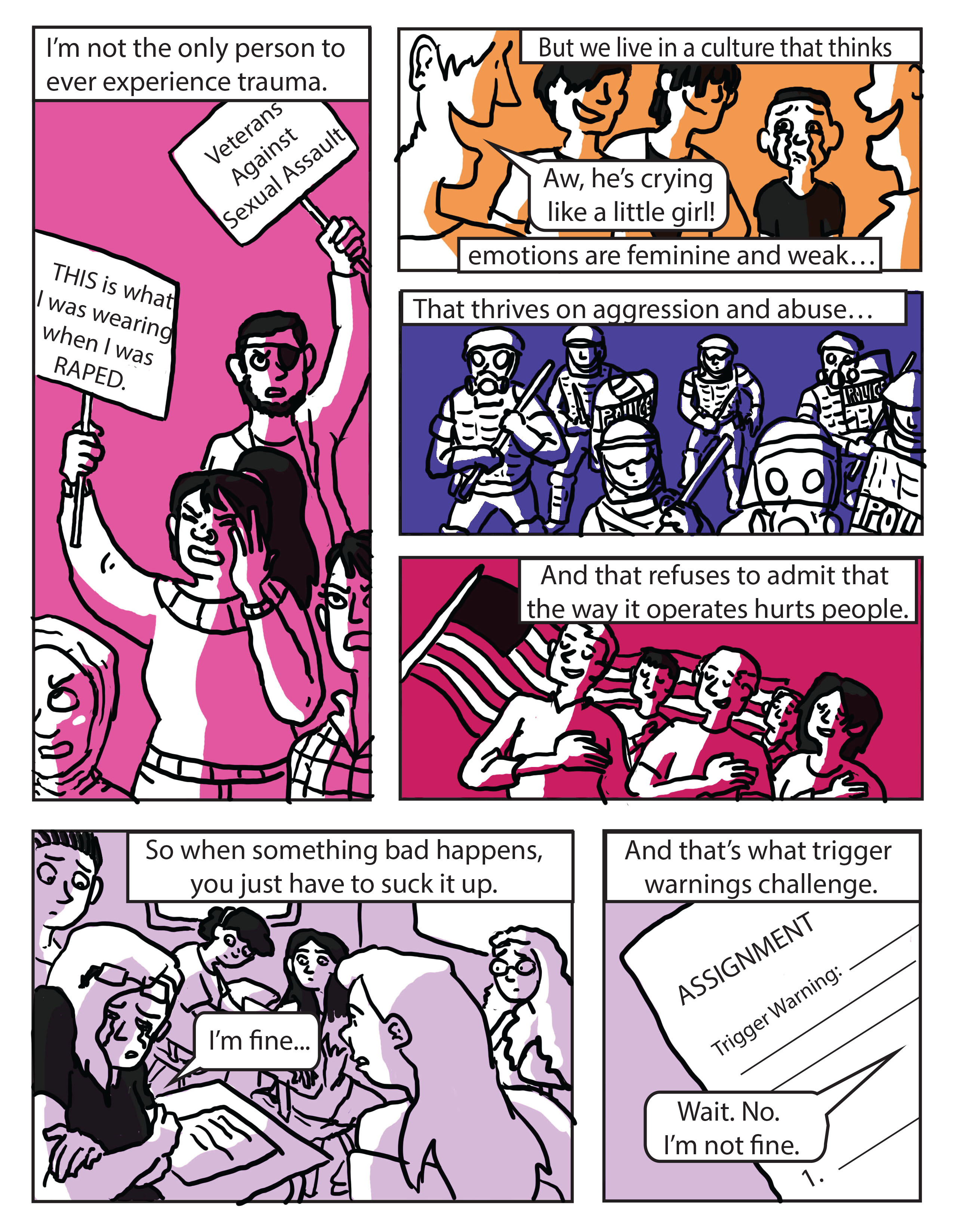A trigger warning in a college course alerts students to the presence of material that may provoke a traumatic response. It might sound something like this:
As a reminder, this week’s reading contains an account of suicide. Please prepare accordingly and employ self‐care throughout the in‐class discussion. One self‐care option is to make use of the Monsour Counseling Center (Sample Syllabus Language, Claremont Colleges CTL).
The usage of trigger warnings has been debated by faculty, administration, students, and researchers, and after spending time reading the arguments and research, I am uncertain whether I would recommend them to an instructor who asked for my advice on the matter. So, rather than advocating for or against trigger warnings, this guide presents several resources for instructors exploring their usage.
Among my instructional design colleagues, trigger warnings have some obvious appeal, perhaps because they dovetail well with the UDL checkpoints that direct us to “facilitate personal coping skills and strategies” and “minimize threats and distractions” in our courses, but their utility is contested. The American Association of University Professors (AAUP), in their report “On Trigger Warnings” outlines some of the issues. Trigger warnings might stifle free and open discussion of difficult topics, prejudice students against engaging with instructional materials critically or encourage avoidance, and interfere with academic freedom. However, in “Teaching with Trauma: Trigger Warnings, Feminism, and Disability Pedagogy,” Carter (2019) asserts that the AAUP misunderstands the goal of trigger warnings and who they’re for – they aren’t intended to protect students in general from adverse learning experiences but rather to provide students who experience trauma and anxiety with the means to engage – in other words, trigger warnings are a question of access and accommodation. Indeed, students themselves are requesting trigger warnings or complaining when they’re not used, as found by the National Coalition Against Censorship in its survey of 800 faculty.

What do we know from experimental research about the effects of trigger warnings? Jones et al. (2020) in their article “Helping or Harming? The Effect of Trigger Warnings on Individuals With Trauma Histories” describe how they presented reading passages that either did or did not contain trigger warnings to over 400 non-students who self-reported trauma. The trigger warnings did not reduce anxiety and instead seemed to cause participants to view traumatic life experiences as even more central to their life stories. Because trauma survivors who ascribe more importance to their trauma are at greater risk for PTSD, this research would suggest that trigger warnings are harming the students we most want to help.
Bentley (2017) in her article “Trigger warnings and the student experience” investigates the reactions of about 60 undergraduates taking 2nd and 3rd year courses that included trigger warnings related to the topics of war and terrorism. Notably, students who didn’t self-report a mental health condition actually experienced more anxiety. The 3rd year students, perhaps because they were further along in their degree, were more likely to perceive trigger warnings as an affront to their self-competence as learners. On the other hand, some students found the warnings helped them explore difficult topics more freely, because they were given time to frame their thoughts and feelings within an academic, rather than a reactionary or personal, context. Other students found the warnings useful because, without them, the triggering nature of course topics would not have been immediately obvious.
For instructors looking for practical tips on how, when, and where to employ a trigger warning, the University of Michigan has prepared a comprehensive “Introduction to Content Warnings and Trigger Warnings”. While content featuring sexual assault may be an obvious trigger, this guide lists 20 other potential triggers that instructors might not have considered, such as classism or fat phobia, and for which students might appreciate a warning. The guide also suggests that, since what triggers others can be hard to predict, instructors should consider inviting students to request which specific types of content they’d like to be flagged. Rather than infantilizing students, the guide argues, trigger warnings empower students to prepare to engage with difficult topics, because with the knowledge of potential triggers, students can work with a therapist or schedule more time to engage with materials, thereby making them more responsible for their learning, not less. The guide also details options for implementation, like flagging individual learning materials in the course schedule by triggering topic, or by issuing blanket warnings in the course description for a course that is largely composed of potentially triggering material. This is a must-read for anyone who has decided to implement trigger warnings.

